Although the current Russian Track and Field team is in the news for other reasons, the Soviet teams have long been dominant in the Olympics. One reason is the work of sport scientist Yuri Verkhoshansky. He was obsessive about measuring the effects of each new training method he tried. His obsessiveness paid off in creating one of the most successful training protocols—one based around jumping drills.
While jumping drills are not appropriate for all athletes, by understanding the science behind them, we can then take those concepts and find ways to apply them using the kettlebell—and without even needing to leave the ground.
The Science Behind Soviet Plyometrics
Verkhoshansky’s depth jumps eventually became known as plyometrics. But modern day “plyometrics” are quite different from his original work. In Verkhoshansky’s depth jump, an athlete drops off a box, lands briefly to absorb the shock, and then immediately jumps as high as possible. The landing period (or amortization phase) is usually less than 0.2 seconds.
Verkhoshansky originally called this method shock training. This type of training primes the neurological system for strength changes and explosiveness. In 1989, Verkhoshansky found that highly trained volleyball players undertaking a depth jump program gained 14% in their maximal strength.
There are three main reasons why depth jumps build explosiveness and strength:
- Greater Central Nervous System Stimulation: The shock of the depth jump leads to greater muscular excitation. The more frequent the muscle nerve fires, the more strength we have. This strengthens the neural to muscle circuitry.
- Myotatic Reflex: As the muscle lengthens, the myotatic reflex (also called the Liddell-Sherrington reflex) causes the muscle to contract. The more our muscles contract reflexively or through neural commands, the stronger we are. Andy Bolton utilizes this reflex right before he deadlifts. He performs three hamstring stretches and on the third stretch he begins his lift.
- Neurogenic Effects: Simply put, neurogenic effects occur when the time between stretching the muscle and the subsequent shortening decreases as the pre-motor cortex anticipates the shock. Over time, the firing rates increase in the myotatic reflex. This means, our reflexes get faster as our body anticipates the shock.
Practical Application of Depth Jumps in Training
Depth jumps should never be done for high volume and should only be performed one to two times per week. Fewer than ten repetitions is a good standard as the jumps are taxing on the neurological system. These are a speed-strength tool and not an endurance tool.
Research indicates that dropping from around thirty inches leads to the greatest explosive strength and reactive abilities. Thus, a running back or a soccer player would benefit the most from these heights. Dropping from around 42 inches leads to the greatest maximal strength development. One common training strategy is to start around a person’s maximum vertical jump height.
Dropping from higher heights is not recommended until an athlete can squat at least 1.5 times his or her bodyweight as the shock from the drop can be three to four times the person’s bodyweight. In addition, any time a person is landing and absorbing shock from great heights, he or she must have good body position. I would not recommend them for most athletes unless they have great squat form and strength. There is a safer alternative.
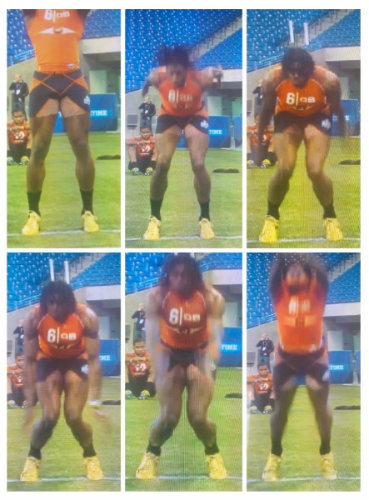
Overspeed Eccentric Kettlebell Swings
We can activate the same beneficial mechanisms found in the depth jump with Russian kettlebell swings by placing an emphasis on the downward (eccentric) portion of the swing. Instead of absorbing the weight of our own body, as we do in depth jumps, we absorb the shock of the kettlebell when it switches directions. The more we force the kettlebell down, the greater the plyometric effect. In the lab, experienced kettlebell instructors like Pavel Tsatsouline and Brett Jones can make a 24kg kettlebell come back down with the force equivalent to three times their bodyweight.
Movement expert and physical therapist Kelly Starrett categorizes movements according to their demands on the body. “Category 3” movements are when the body changes position, but must quickly return to a stable position. Verkhoshansky’s depth jumps are a good example of this. As the person absorbs the shock of landing, he or she must quickly get into proper position. Category 3 movements are much more demanding than when the body is already in a stable position. Kettlebell swings have the advantage of allowing us to have good foot position and ankle and knee stability before we absorb the shock of the kettlebell switching directions.
I might speculate that much of the “what the heck” effects of kettlebell swings come from when we reverse force. The more force there is to reverse, then the more strength we will gain. Additionally, as we build the reflex system, we build an explosive hair trigger that we can fire very quickly with a lot of force. There are multiple stories of advanced powerlifters adding strength to their deadlifts by doing these types of kettlebell swings.
Kettlebell swing overspeed eccentrics can be accomplished in three ways, which are all demonstrated in the video below:
- Accentuate the Eccentric: Generally, we let the kettlebell float into position and let gravity take it back down into our next swing. However, we can actively accelerate it downward by throwing it down and between our legs.
- Partner Assisted Downward Throw: Have a person stand on the side and push down on the kettlebell when it reaches the top.
- Band Assisted Eccentric: Wrap a band around the kettlebell and stand on the band. Once the kettlebell hits the top of the swing, the band will accelerate the kettlebell back down.
How to Add Overspeed Eccentric Swings to Your Training
Similar to the recommendations above for depth jumps, I would not recommend doing overspeed eccentric swings frequently or with higher reps. The neurologic system is taxed much more than in regular swings and will not make gains with high-rep schemes. Ten or fewer reps is a good rule of thumb with at least a few minutes of rest in between sets. Don’t do these more than a few days a week. Brett Jones might call overspeed eccentric swings a “spice” and not the main course.
Summary
The more we do plyometrics, the more our body responds and builds explosive power. This explosive power can help our absolute strength (e.g., deadlift), speed strength (e.g., clean), and pure speed (e.g., sprinting). Basically, we are learning to load our muscles with potential energy for later release. While depth jumps are effective, the overspeed eccentric swing is a safer and more practical alternative.
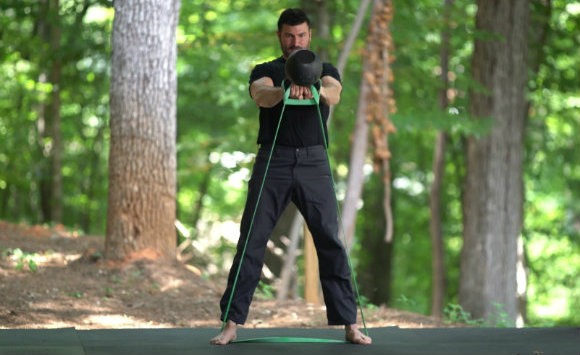
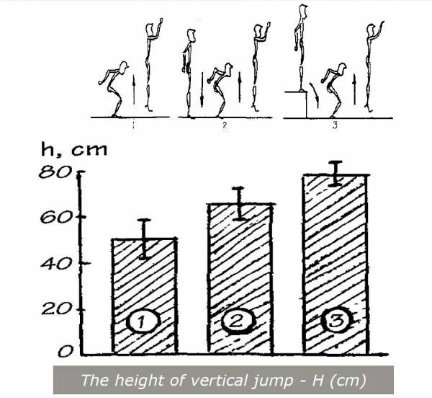


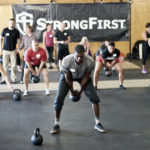
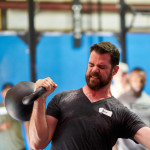


This article is now closed for comments, but please visit our forum, where you may start a thread for your comments and questions or participate in an existing one.
Thank you.